Church Of St. Nicholas In Demre, Turkey - A Place Where Peace Reigns
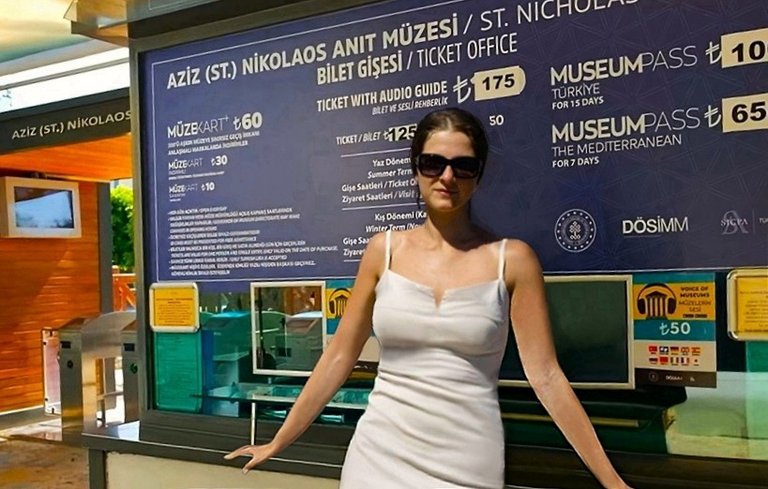
A visit to St. Nicholas Church is included in the already traditional Turkish triple excursion Demre-Myra-Kekova. We went there after returning from Kekova Island.
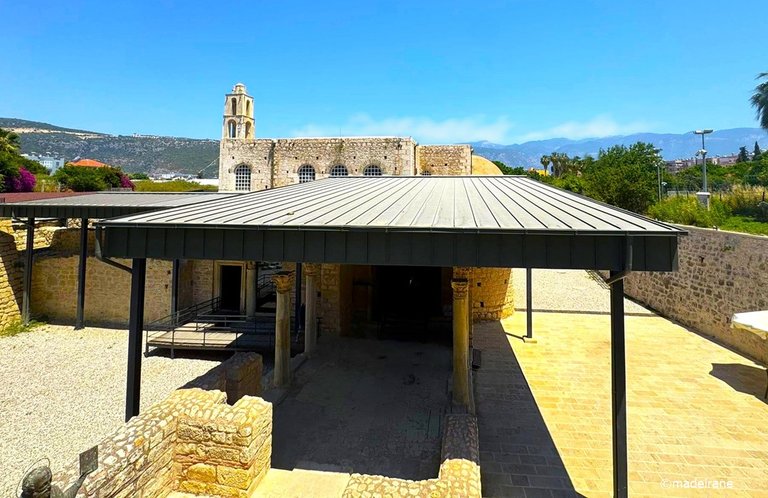
In the city of Mira-Demre there is the ancient church of St. Nicholas, where his relics are buried in a marble sarcophagus. What surprised me was that Turkey is a Muslim country and I did not expect that there would be a church of St. Nicholas the Wonderworker here. Immediately after the death of the Saint, this church was built in the 4th century. Later, it was destroyed by an earthquake and a flood, and the Arabs also destroyed it. The church was completely covered in dirt, only part of its bell tower was visible, and it was discovered by accident.

The church is a basilica in the shape of a cross with a dome in the middle. Earlier, in ancient times, the city of Demre was known as Myra (Myra). According to legend, in the 4th century, the bishop of the city was St. Nicholas. Now the church has been converted into a memorial museum of St. Nicholas and at the time of the visit, namely in April 2022, the museum is being restored. Tourists could visit the museum, but with certain restrictions.
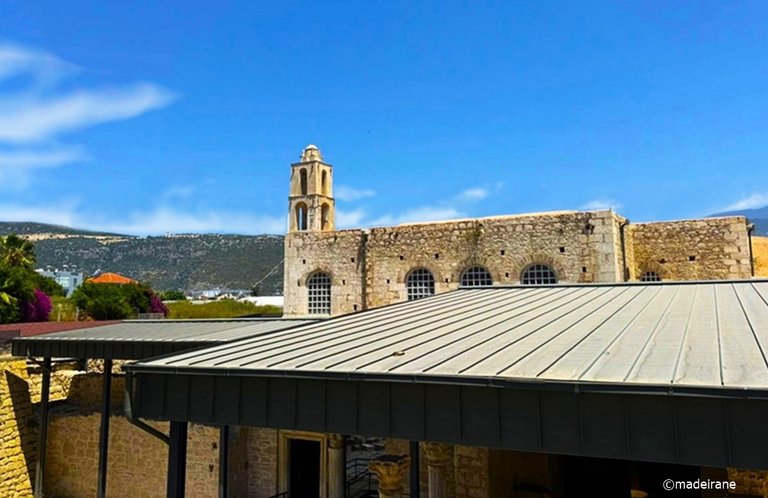
There are various legends. They say that he spent all the large fortune he got from his parents on gifts. At night, in secret from people, he threw gifts to those in need of help. This is where Santa Claus with a bag of presents came from. The tradition of putting presents in stockings appeared after Nicholas threw a bag of money into the chimney of another poor person, and it ended up in a stocking drying by the fireplace. This is how Nicholas the Wonderworker performed miracles.
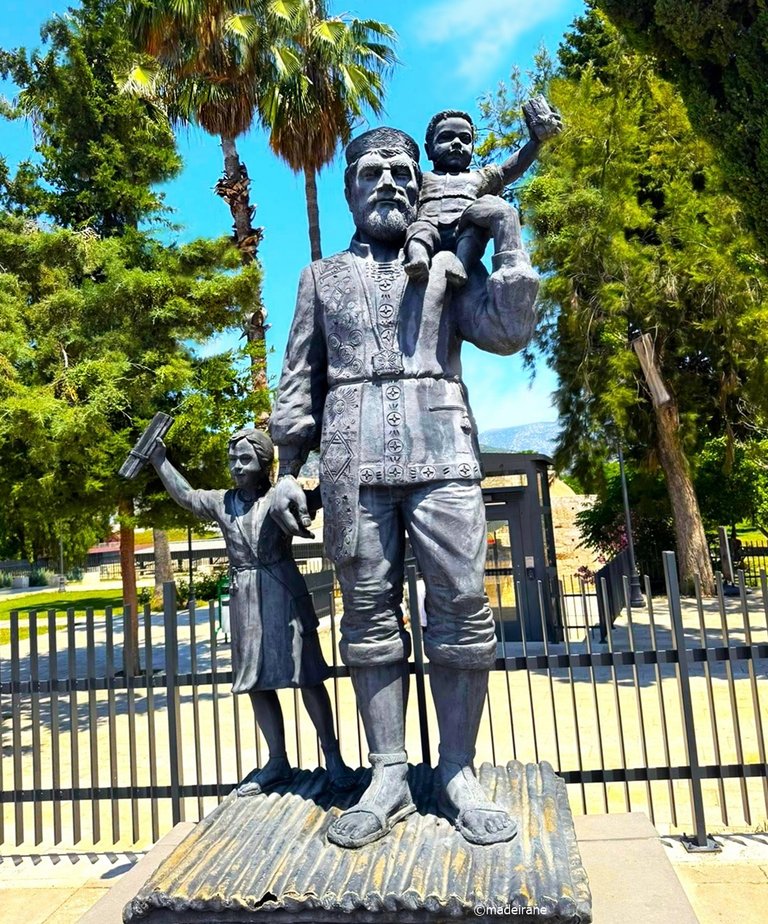
The tour itself is quite interesting, they tell a lot of piquant details connected both with the building itself and with the person whose name it bears, but for me personally, the most interesting thing in this whole endless monologue was the opportunity to observe the listeners. I tried and still could not understand. Is it really true that in the age of the Internet there are still those who are really more interested in listening to a lecture than reading the same thing online, and now, instead of that, they could just calmly walk around and look at the premises? Apparently, there are, because the groups of tourists kept arriving and arriving. I didn’t listen and just went for a walk along the corridors and premises.
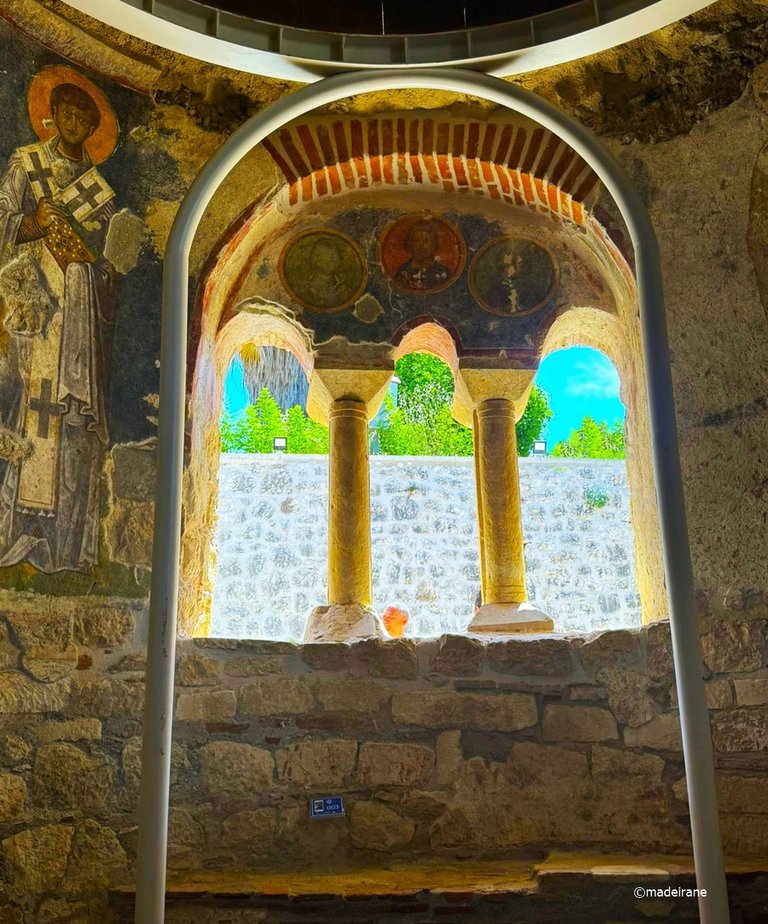
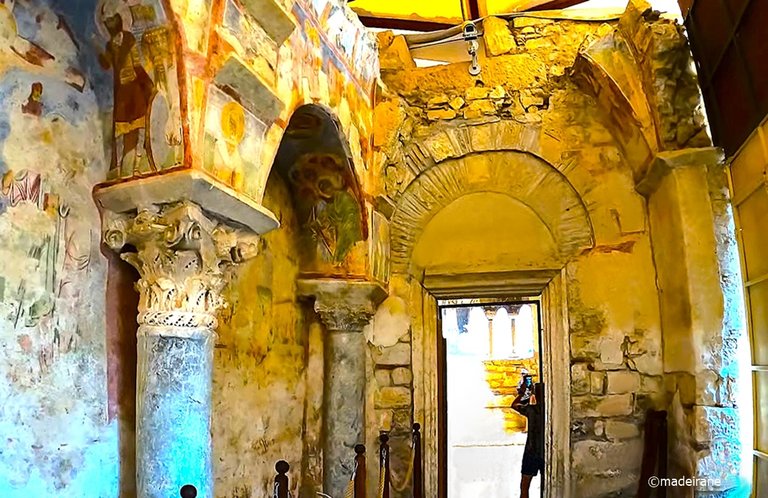
Free photography and video shooting are allowed inside the temple. What impressed me most was that the building is located below the current soil level. And not just below, but significantly below, you literally have to go down to it, like into an open-pit ore mine. The reasons are clear and quite natural: the building is many years old, and during this time the soil layer has grown significantly, and the temple had to be literally dug out of the ground and then maintained in its current state. To sit as if in a hole is the fate of all truly ancient buildings, and this one is already about two thousand years old. This is something you will remember for a long time.
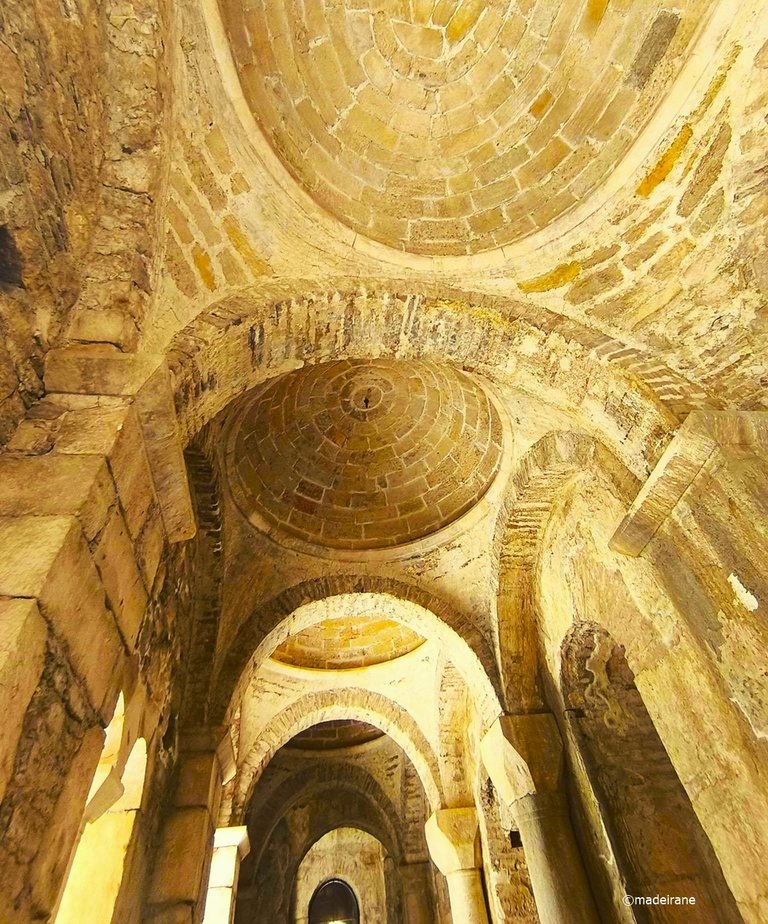
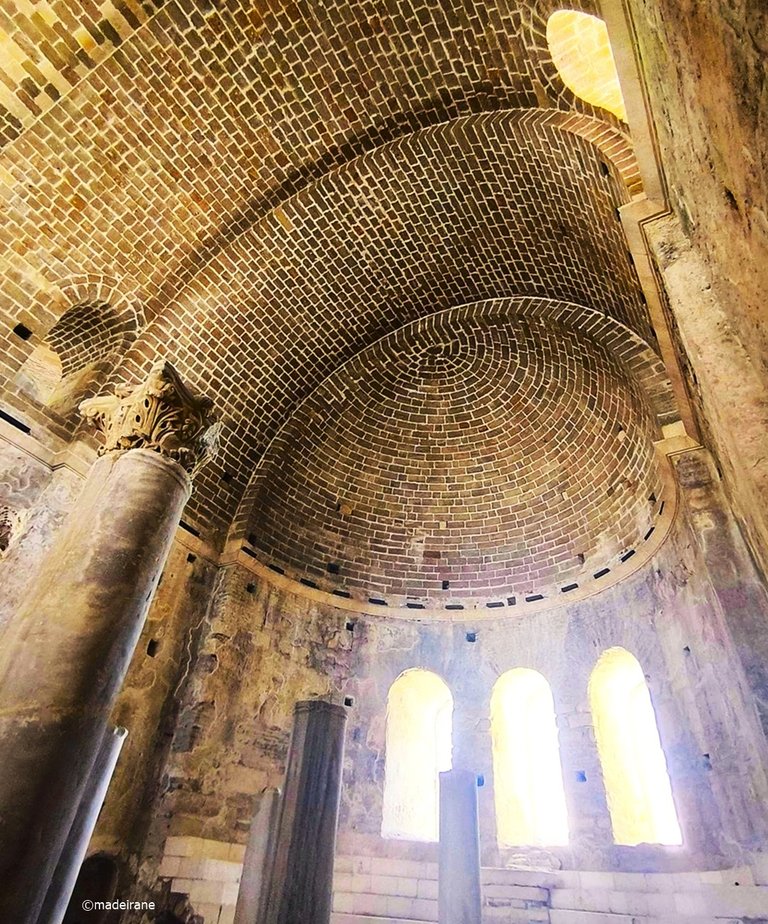
There is no artificial lighting in the building, but it is quite light and not damp at all. It is also impressive that the temperature inside is quite comfortable, even when it is terribly hot outside. I don’t know what exactly this is connected with, whether it is because the building is “sunk” into the ground, or because of the materials it is built from, or something else, but it is a fact.

The altar of the temple is quite interesting. Here the guides recommend taking pictures of the beginning of the passage behind the altar (it is impossible to get close, there are turnstiles). In the resulting pictures you can supposedly see the silhouette of Nicholas. In general, of course, depending on the emotional state of a person and with proper self-hypnosis, you can see anything in this picture: a tree, a hamburger, even a person.

The building has many different arches, openings, vaults and other design refinements, some of which serve aesthetic purposes, others are of practical use, but in general it creates a feeling of some kind of completeness to the project. That is, the building does not look like some kind of abandoned or dilapidated construction site, but only an ascetically executed structure for very specific needs.
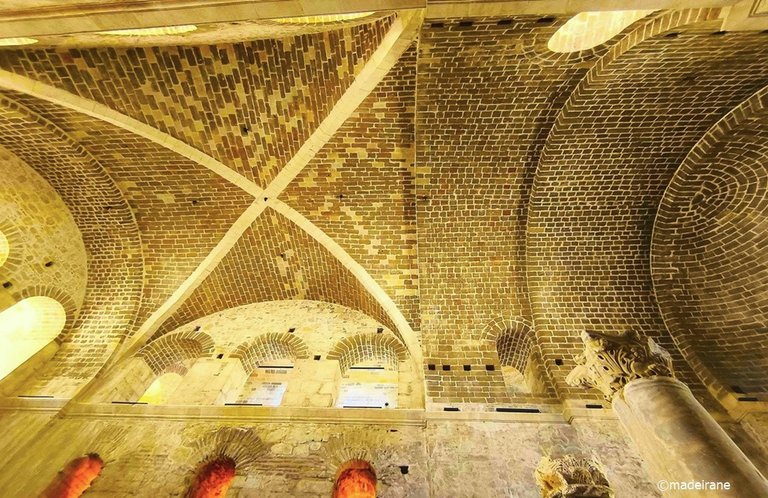

I would like to highlight several of the most interesting objects inside the temple. Firstly, this is the sarcophagus of Nicholas (in which, supposedly, part of his relics are kept). Believers from almost all over the world gather here to attach their crosses or other religious attributes to consecrate them.
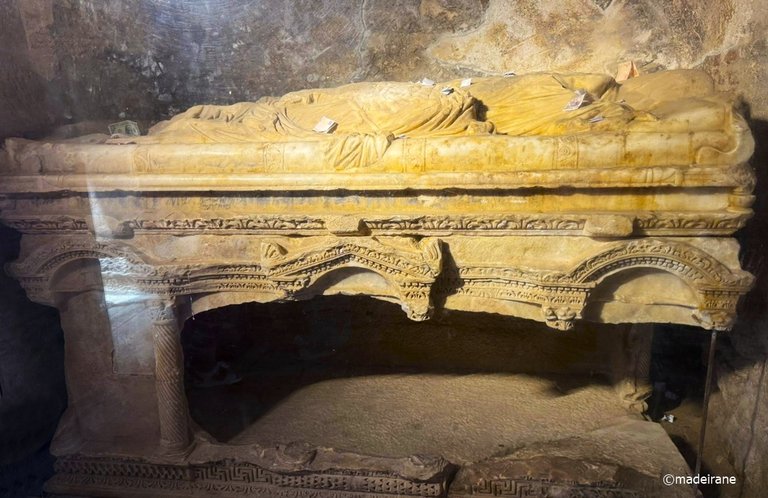
Secondly, the altar of the temple, which I have already mentioned. The largest number of pictures are taken here, but the lighting is the least convenient here (shooting opposite the windows), so only a few attempts are successful.
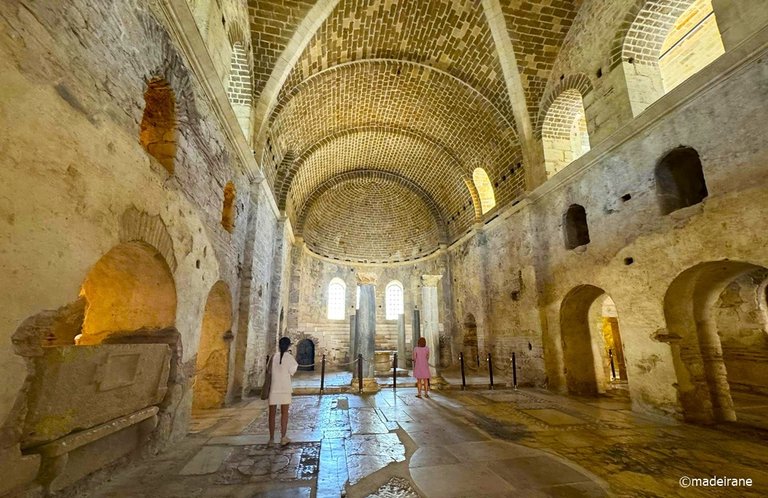
Thirdly, on the ceiling (vault) of the temple you can see a small cross, inserted here during the next restoration work. Some people, due to the peculiarities of their vision, do not see this cross right away, although in the picture, for example, they see it quite clearly. However, I could not take a good photo of it.
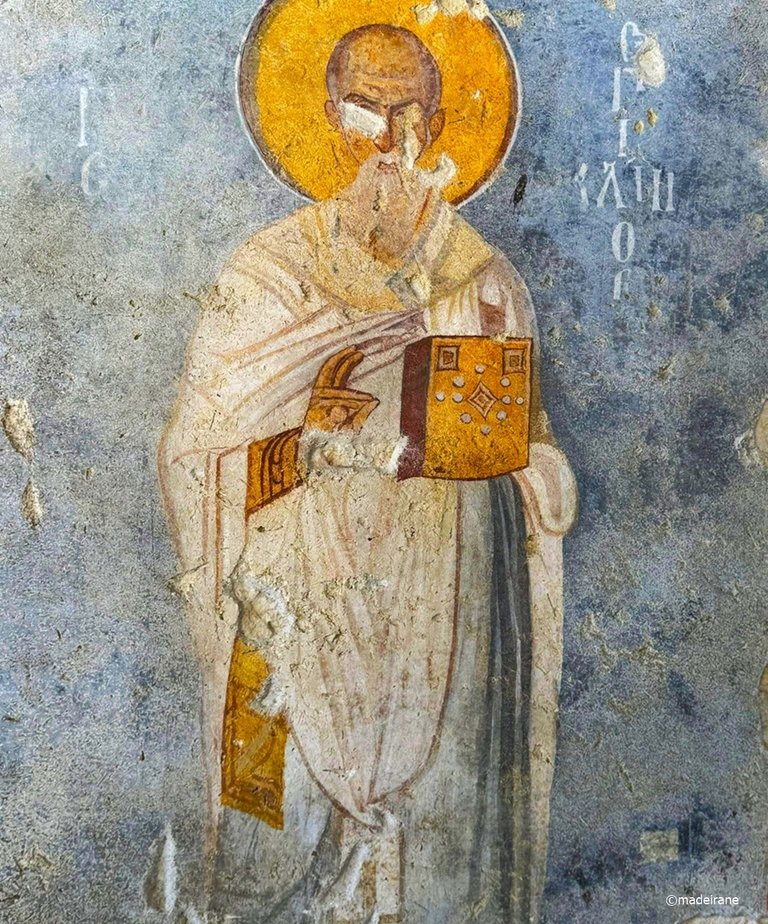
In addition, at the entrance to the temple there is a rather interesting statue of Nicholas: thousands of hands have already polished his simple shoes. Just as millions of feet have polished the stone floors of the temple.

On the space of the temple you can also find various sarcophagi, columns, interesting inscriptions and frescoes. Of course, I was impressed by how well they were preserved, considering how old they are. It is clear that they are constantly being restored, but they do it in such a way that they do not look new at all, but look exactly as the drawings should look, which are many centuries old.
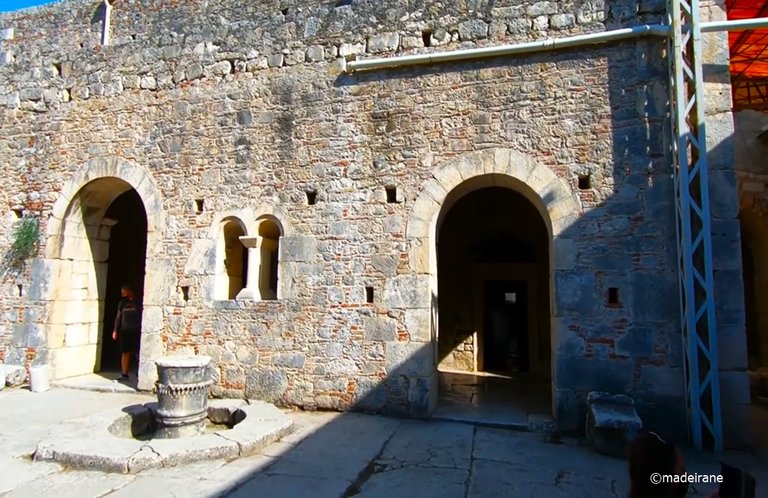
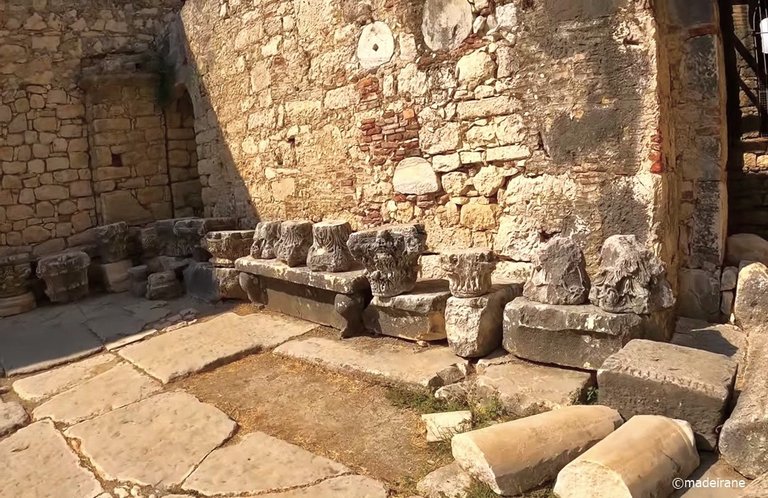
Although I will hardly ever return to this temple, I still recommend visiting it, because although it is essentially just a pile of gray stones, the place is still quite interesting, and the entrance fee is not high. And for some people it is a shrine, and for them the question of visiting is not even discussed.
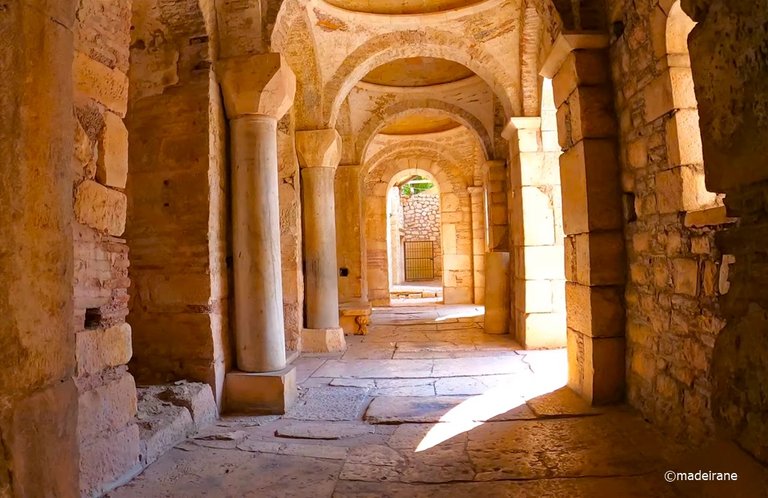
[//]:# (!worldmappin 36.24490 lat 29.98534 long Church of St. Nicholas the Wonderworker (Türkiye, Demre) - A Place Where Peace Reigns d3scr)
💝💝💝💝💝💝💝💝💝💝
With love, @madeirane
Photos are taken by me.
© 2025
Translated from Lithuanian with DeepL.com (free version)
Apsilankymas šioje šventykloje įtrauktas į jau tradicine tapusią trigubą turkišką ekskursiją Demrė-Myra-Kekova. Mes ten nuvykome grįžę iš Kekovos salos.
Mira-Demre mieste yra senovinė šventojo Mikalojaus bažnyčia, kurioje marmuriniame sarkofage palaidotos jo relikvijos. Mane nustebino tai, kad Turkija yra musulmoniška šalis, todėl nesitikėjau, kad čia bus šventojo Mikalojaus Stebukladario bažnyčia. Tuoj po šventojo mirties ši bažnyčia buvo pastatyta IV amžiuje. Vėliau ją sugriovė žemės drebėjimas ir potvynis, o arabai ją taip pat sunaikino. Bažnyčia buvo visiškai užversta purvu, matėsi tik dalis jos varpinės, kuri buvo atrasta atsitiktinai.
Bažnyčia yra kryžiaus formos bazilika su kupolu viduryje. Anksčiau, senovėje, Demrės miestas buvo vadinamas Myra. Pasak legendos, IV a. miesto vyskupu buvo šventasis Mikalojus. Dabar bažnyčia paversta Mikalojaus memorialiniu muziejumi, o vizito metu, turistai galėjo aplankyti muziejų, tačiau su tam tikrais apribojimais.
Yra įvairių legendų. Jos pasakoja, kad visą iš tėvų gautą didelį turtą jis išleido dovanoms. Naktimis, slapta nuo žmonių, jis mėtė dovanas tiems, kuriems reikėjo pagalbos. Štai iš kur atsirado Kalėdų Senelis su maišu dovanų. Tradicija dėti dovanas į kojines atsirado po to, kai Mikalojus į kito vargšo kaminą įmetė maišą su pinigais, o šie atsidūrė prie židinio džiūstančioje kojinėje. Taip Mikalojus Stebukladarys darė stebuklus.
Pati ekskursija gana įdomi, pasakojama daug pikantiškų detalių, susijusių ir su pačiu pastatu, ir su asmeniu, kurio vardą jis nešioja, tačiau man asmeniškai įdomiausia visame šiame nesibaigiančiame monologe buvo galimybė stebėti klausytojus. Stengiausi ir vis tiek negalėjau suprasti. Ar tikrai interneto amžiuje vis dar yra tokių, kuriems tikrai įdomiau klausytis paskaitos nei skaityti tą patį internete, o dabar, užuot tai darę, jie galėtų tiesiog ramiai vaikščioti ir apžiūrinėti patalpas? Matyt, tokių yra, nes turistų grupės vis atvykdavo ir atvykdavo. Neklausiau ir tiesiog išėjau pasivaikščioti po koridorius ir patalpas.
Šventykloje leidžiama laisvai fotografuoti ir filmuoti. Labiausiai mane sužavėjo tai, kad pastatas yra žemiau dabartinio dirvožemio lygio. Ir ne šiaip žemiau, o gerokai žemiau, tiesiogine to žodžio prasme iki jo reikia nusileisti žemyn, kaip į atvirą rūdos kasyklą. Priežastys aiškios ir visiškai natūralios: pastatui daug metų, per tą laiką dirvožemio sluoksnis gerokai padidėjo, todėl šventyklą reikėjo tiesiog iškasti iš žemės, o paskui palaikyti dabartinę jos būklę. Sėdėti tarsi duobėje - toks visų tikrai senovinių pastatų likimas, o šiai šventyklai jau apie du tūkstančius metų. Tai kažkas, ką prisiminsite ilgai.
Pastate nėra dirbtinio apšvietimo, tačiau čia gana šviesu ir visai ne drėgna. Įspūdį daro ir tai, kad temperatūra viduje gana komfortiška, net kai lauke siaubingai karšta. Nežinau, su kuo tiksliai tai susiję, ar su tuo, kad pastatas „įleistas“ į žemę, ar su medžiagomis, iš kurių jis pastatytas, ar su kuo nors kitu, bet tai faktas.
Šventyklos altorius yra gana įdomus. Čia gidai rekomenduoja nufotografuoti už altoriaus esančio praėjimo pradžią (prieiti arčiau neįmanoma, yra turniketai). Gautose nuotraukose neva galima pamatyti Mikalojaus siluetą. Apskritai, žinoma, priklausomai nuo žmogaus emocinės būsenos ir esant tinkamai savihipnozei, šioje nuotraukoje galima pamatyti bet ką: medį, mėsmalę, net žmogų.
Pastatas turi daug įvairių arkų, angų, skliautų ir kitokių konstrukcinių patobulinimų, kurių vieni tarnauja estetiniams tikslams, kiti yra praktinės paskirties, tačiau apskritai tai sukuria tam tikro projekto išbaigtumo jausmą. Tai reiškia, kad pastatas neatrodo kaip kokia nors apleista ar nuniokota statybvietė, o tik asketiškai atliktas statinys, skirtas labai konkretiems poreikiams.
Norėčiau išskirti keletą įdomiausių šventyklos viduje esančių objektų. Pirmiausia tai Mikalojaus sarkofagas (kuriame, kaip spėjama, saugoma dalis jo relikvijų). Čia susirenka tikintieji beveik iš viso pasaulio, kad pritvirtintų savo kryžius ar kitus religinius atributus ir juos pašventintų.
Antra, šventyklos altorius, kurį jau minėjau. Čia padaroma daugiausia nuotraukų, tačiau apšvietimas čia mažiausiai patogus (fotografuojama priešais langus), todėl tik keli bandymai būna sėkmingi.
Trečia, ant šventyklos lubų (skliauto) galima pamatyti nedidelį kryžių, kuris čia buvo įdėtas per kitus restauravimo darbus. Kai kurie žmonės dėl savo regėjimo ypatumų ne iš karto įžvelgia šį kryžių, nors nuotraukoje, pvz.
Be to, prie įėjimo į šventyklą stovi gana įdomi Mikalojaus statula: tūkstančiai rankų jau nušlifavo jo paprastus batus. Lygiai taip pat, kaip milijonai kojų nupoliravo akmenines šventyklos grindis.
Šventyklos erdvėje taip pat galima rasti įvairių sarkofagų, kolonų, įdomių užrašų ir freskų. Žinoma, mane sužavėjo, kaip gerai jos išsilaikė, turint omenyje, kokio senumo yra. Akivaizdu, kad jos nuolat restauruojamos, tačiau tai daroma taip, kad visai neatrodo naujai, o atrodo būtent taip, kaip turėtų atrodyti daugybės šimtmečių senumo piešiniai.
Nors vargu ar kada nors grįšiu į šią šventyklą, vis tiek rekomenduoju ją aplankyti, nes nors iš esmės tai tik pilkų akmenų krūva, vieta vis tiek gana įdomi, o ir įėjimo mokestis nėra didelis. O kai kuriems žmonėms tai yra šventovė, ir jiems apsilankymo klausimas net nesvarstomas.
You can check out this post and your own profile on the map. Be part of the Worldmappin Community and join our Discord Channel to get in touch with other travelers, ask questions or just be updated on our latest features.
Hello.
To confirm your authorship of the content, could you please add the link to your Hive blog to a profile on a well-established social media account like Facebook, Instagram, or Twitter (which has not been recently created)?
After you add the link, please respond to this comment with the URL link to that website.
You can remove this mention once we confirm the authorship.
Thank you.
More Info: Introducing Identity/Content Verification Reporting & Lookup
Turkey looks like such an intersting and spiritual place. Thank you for showing this church to us.